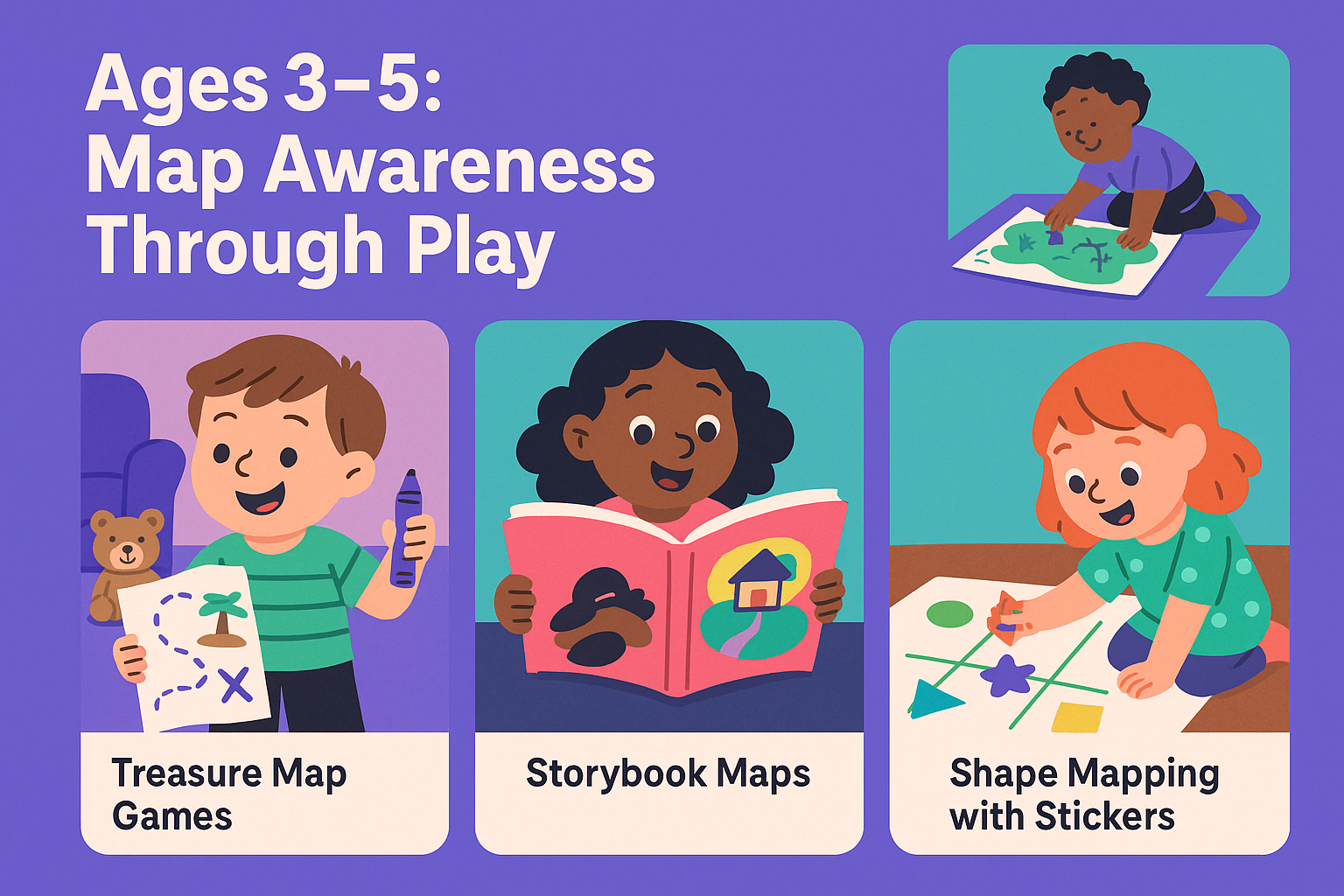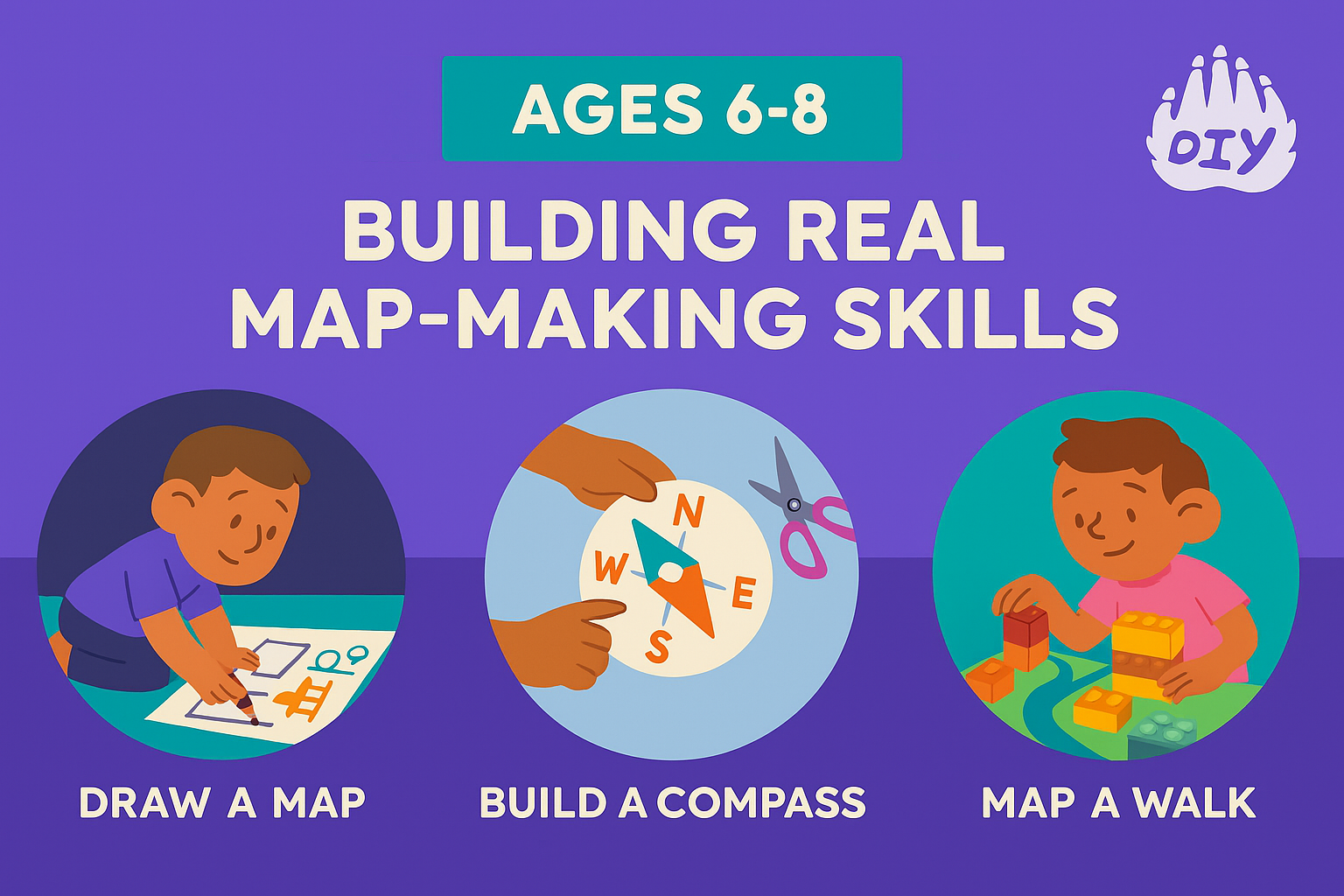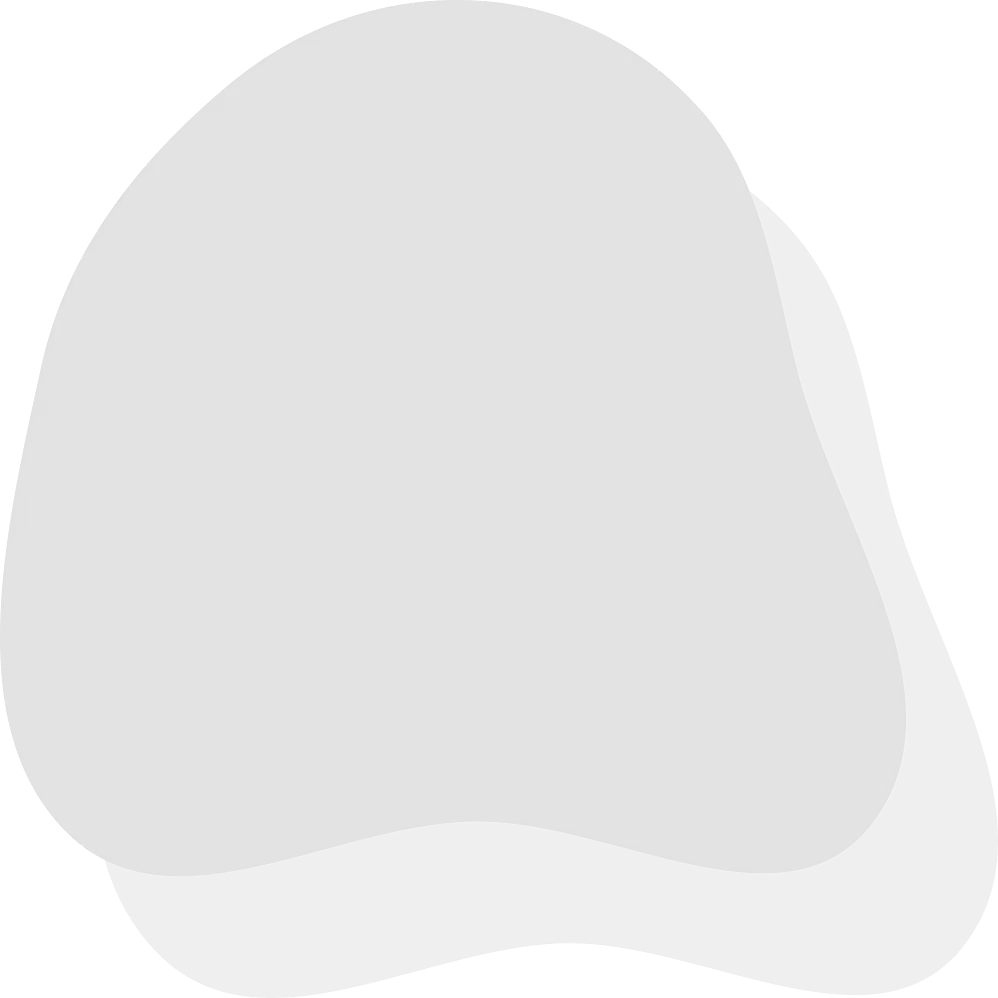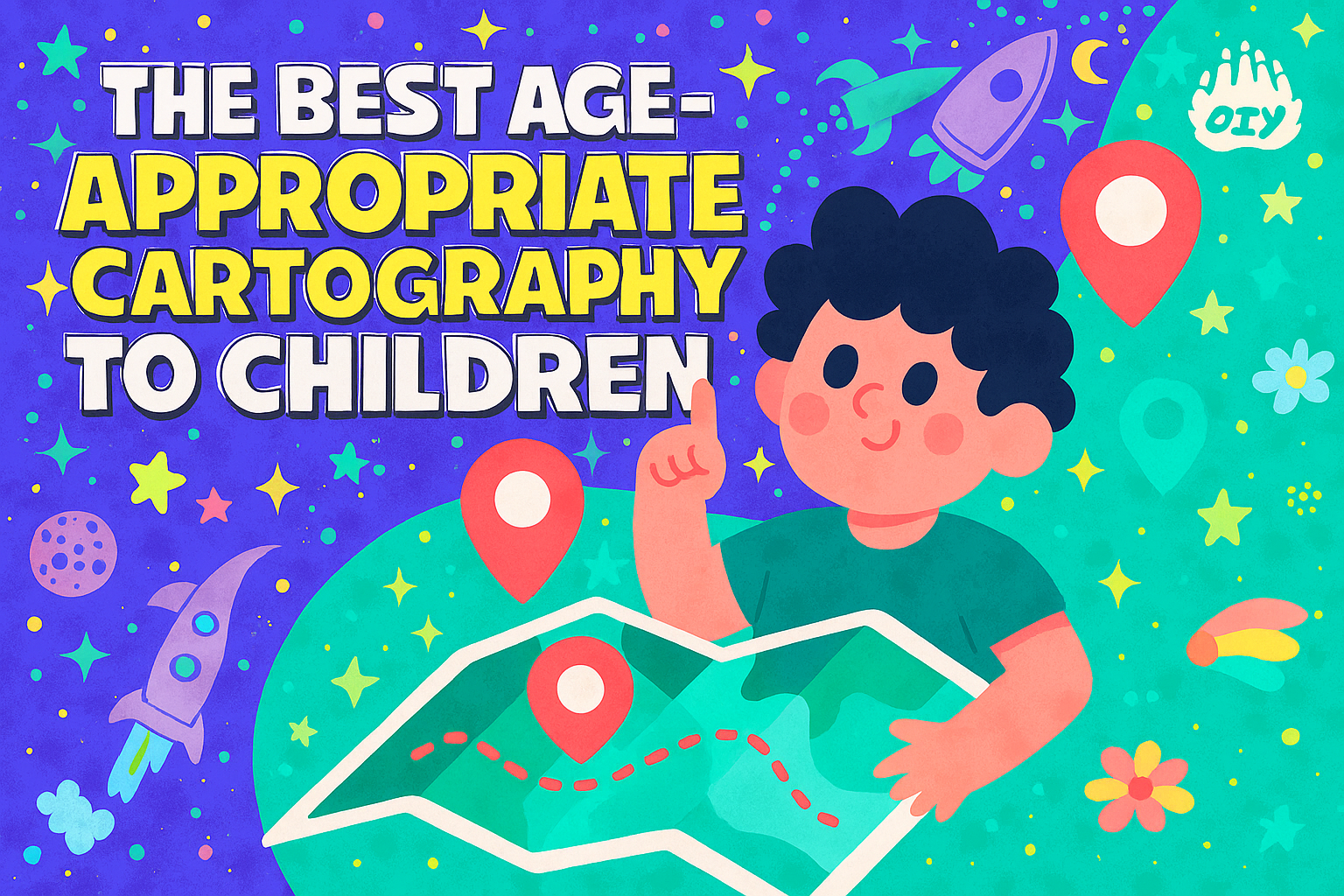Even in today’s tech-powered world, understanding maps is still a valuable life skill. Cartography the science and art of map-making builds spatial awareness, fosters independence, and encourages kids to explore the world around them. It’s more than just geography; it’s about problem-solving, storytelling, and visual thinking.
But how do you introduce something like cartography to children in a way that’s engaging and age-appropriate? That’s where the magic of hands-on learning and play-based exploration comes in.
Whether your child is just learning their shapes or ready to build 3D topographic maps, here’s how to nurture map-making skills at every age.

Ages 3–5 Map Awareness Through Play
What They’re Learning
Basic spatial relationships (near, far, over, under)
Simple symbols and icon recognition
Following directions and visual cues
Young kids are natural explorers. They're curious, imaginative, and thrive on play. For toddlers and preschoolers, cartography should be sensory-rich and rooted in what they know, stories, colors, and fun.
Try These Activities
Treasure Map Games. Hide small toys around the room and draw a basic map showing where they are. Use “X” to mark the spot!
Storybook Maps. After reading a book, draw a path of where the characters went like a map of the story’s journey.
Shape Mapping with Stickers. Use large sheets of paper to place shapes or stickers on a “grid.” Have your child find or replicate patterns using visual clues.
Keep the visuals big, bold, and interactive think crayons, stickers, or even floor tape to make map paths they can walk on.

Ages 6–8 Building Real Map-Making Skills
What They’re Learning
Cardinal directions (north, south, east, west)
Legends and symbols
How to translate physical space into paper
At this age, kids are ready to move beyond abstract concepts. They can begin creating their own maps with purpose and structure. This is the perfect time to blend geography with creativity.
Try These Activities
Draw a Map of Their Room or Playground. Let them identify where items are and label with their own legend.
Build a Compass Rose. Use craft materials to create a compass and play direction games (e.g., “Take three steps north”).
Map a Neighborhood Walk. After a short walk, ask your child to draw the path, labeling landmarks they saw along the way.
Recreate the map using LEGO bricks or blocks to add dimension and reinforce spatial relationships.

Ages 9–12 Exploring the World (and Imaginary Ones!)
What They’re Learning
Scale and proportion
Elevation and topography
Real-world mapping tools and systems
Tweens are ready for more complex and meaningful cartography. Their brains are wired for both imagination and logic so let them dive into real and fantasy worlds through maps.
Try These Activities
Create a Fantasy World Map. Encourage them to design a world with its own cities, terrain, and stories. Include a legend and compass.
Build a Topographic Model. Use layered cardboard or clay to model elevation and landforms like mountains and valleys.
Explore Digital Maps. Let kids experiment with Google Earth or interactive geography games. Have them compare satellite views to drawn maps.
STEM Connection. Introduce simple GIS (Geographic Information Systems) tools or map-based puzzle apps to show how cartography powers real-world decisions.
Tips for All Ages
Use storytelling to explain map features characters need to get from point A to point B!
Keep a map wall or station where your child can hang creations, globes, or atlases.
Celebrate small wins like “first compass rose” or “first 3D map” to make learning exciting.
Incorporate maps into play like treasure hunts, scavenger games, or building mini cities.
How Cartography Supports Holistic Learning
Cartography is more than a geography lesson it supports:
Critical thinking and logical reasoning
Spatial intelligence, which is essential for math and engineering
Global awareness, helping kids connect with new cultures and places
Creative storytelling, blending fantasy, design, and structure
Whether your child is headed into STEM or loves imaginative play, cartography is a meaningful way to develop well-rounded thinking.
FAQs on Best Age-Appropriate Ways to Introduce Cartography to Children
What is the best age to start teaching kids about maps?
Kids can begin learning simple map skills around age 3 through playful activities like treasure maps and symbol matching. As they grow, add concepts like direction, scale, and landforms.
How do you teach map skills to preschoolers?
Use fun, hands-on activities: draw treasure maps, map out a room, or use stickers as symbols. Keep it visual and interactive no formal lessons needed.
What are fun ways to teach cartography to kids?
Try fantasy world maps, 3D land models, neighborhood walks, or compass games. Mixing art, play, and exploration makes maps exciting.
Why is cartography important for children?
Maps build spatial awareness, problem-solving, and critical thinking. They also connect to math, science, art, and history, making them a strong learning tool.
Are there online cartography activities for kids?
Yes. Platforms like DIY offer safe, creative projects where kids can draw, build, and share maps online.
How can I integrate map skills into homeschool or classroom lessons?
Use projects like mapping a storybook, recreating a field trip, or designing imaginary lands. Link cartography to science, art, and history for cross-subject learning.
Ready to Dive into Real Map-Making?
At DIY, kids can; Build maps from memory or imagination, Practice skills like legends, compass roses, and elevation, Share their maps with a safe, creative online community
Whether you’re a parent, educator, or curious learner, DIY offers a playful path into real-world skills. With structured challenges and lots of creative freedom, cartography becomes not just a subject but a journey.



